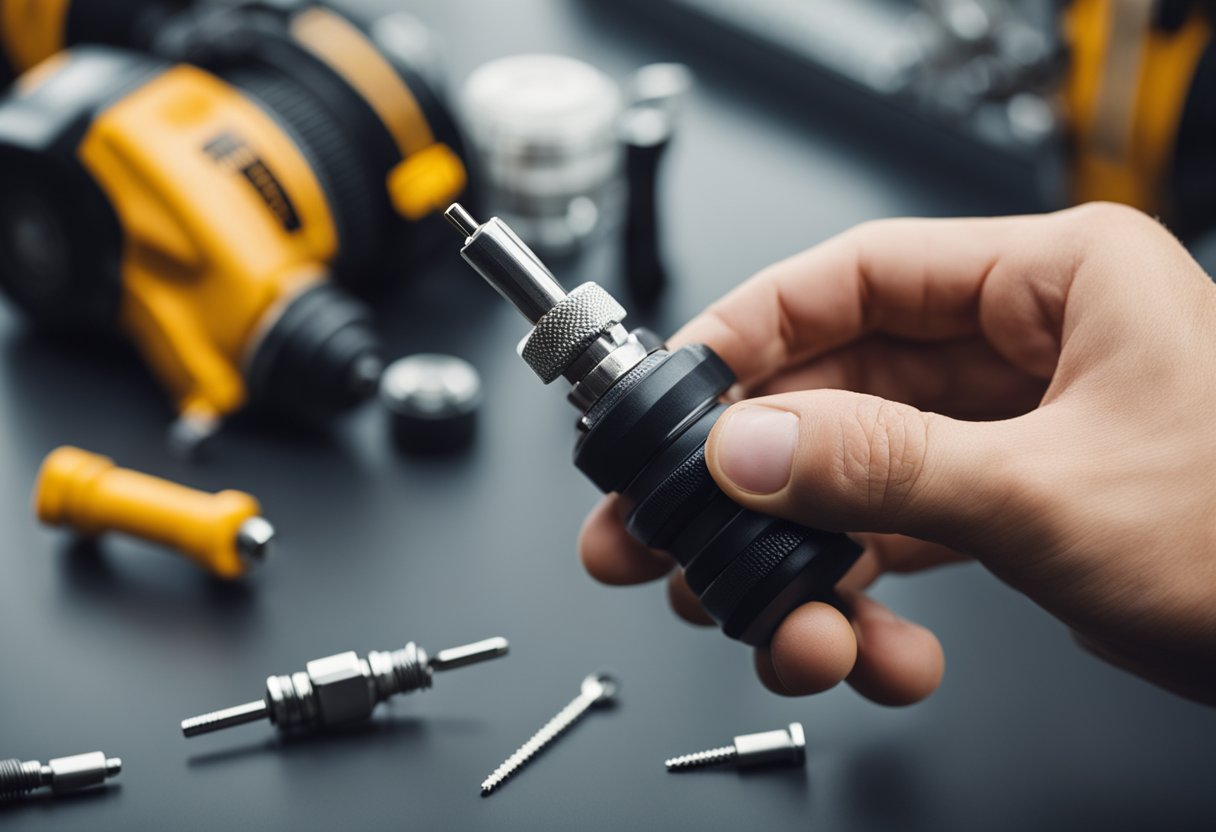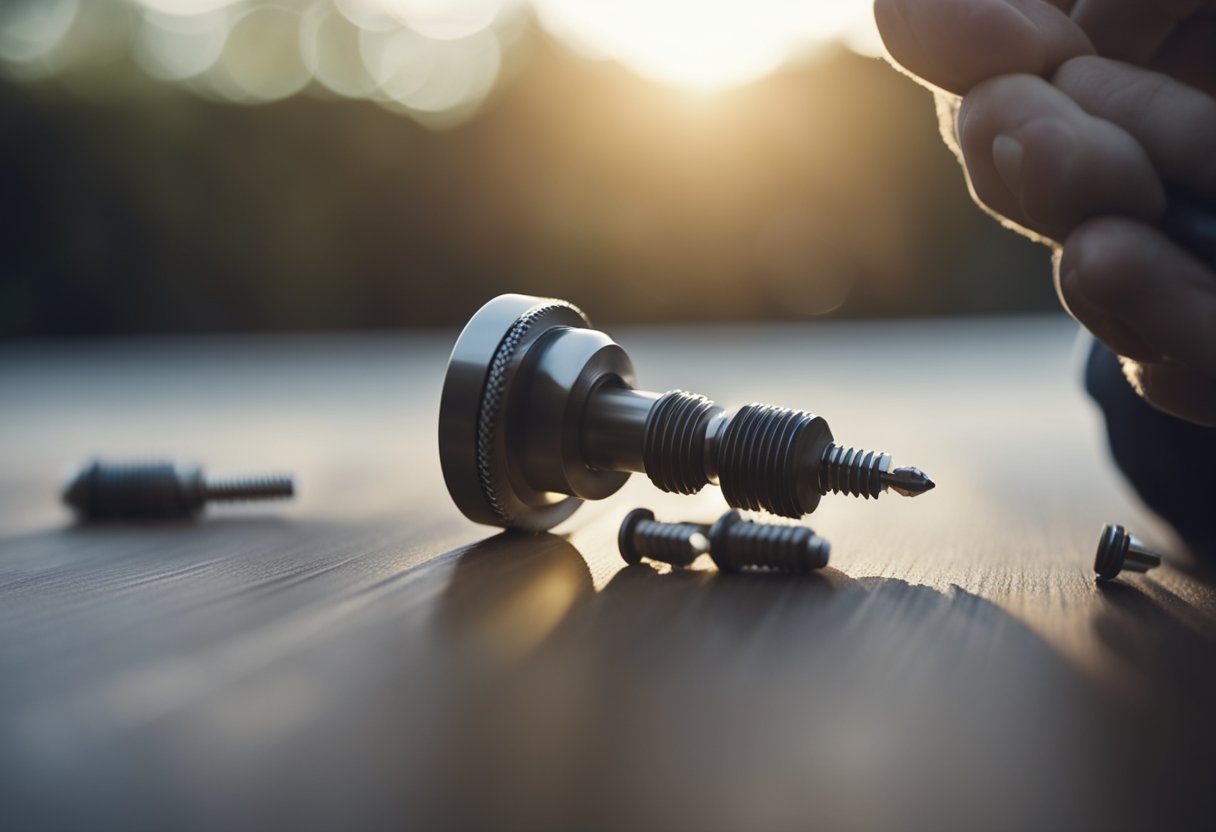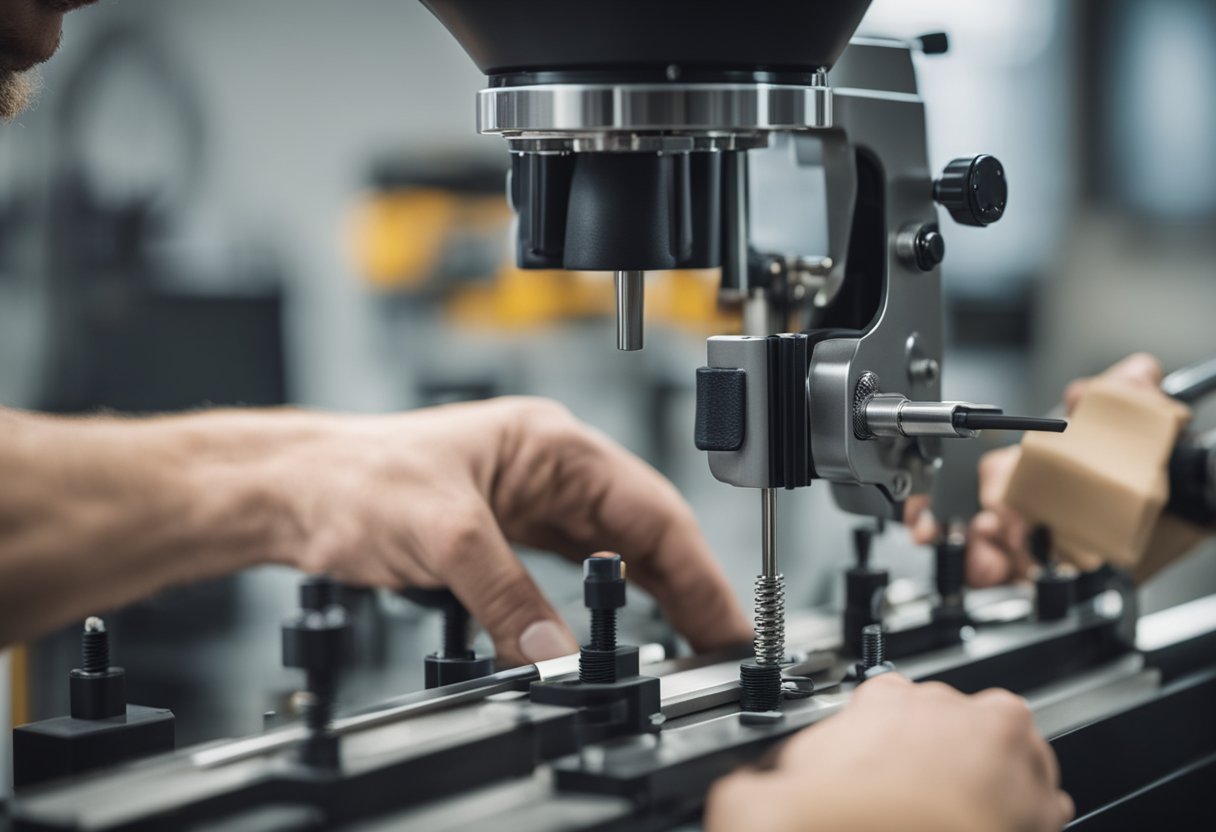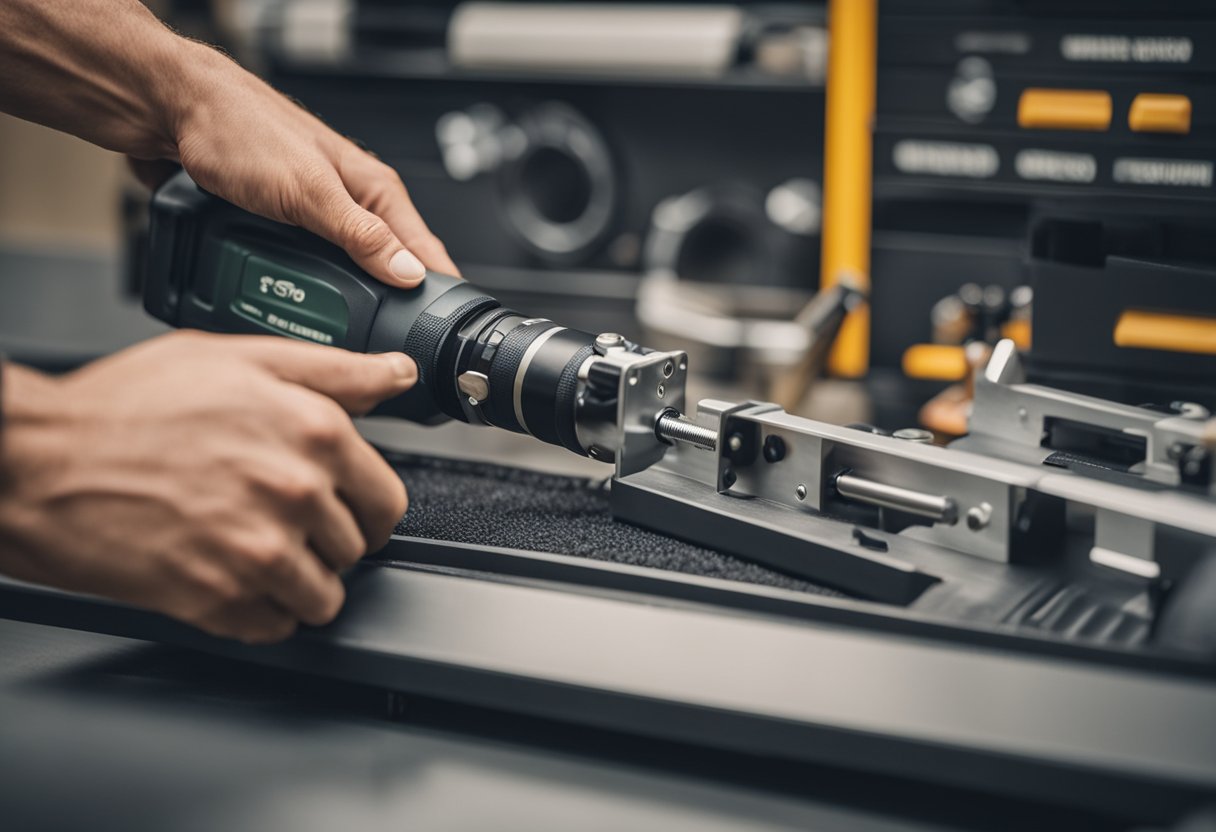Installing screw-in stabilizers is an essential part of building a mechanical keyboard. Stabilizers help keep the keys level and prevent them from wobbling. They also ensure that the keys return to their original position after being pressed. In this article, I will guide you through the process of installing screw-in stabilizers on your keyboard.
Before we dive into the installation process, let’s first understand what stabilizers are and why they are important. Stabilizers are mechanical components that help stabilize the larger keys on a keyboard. They come in different types, including screw-in, snap-in, and plate-mounted. Screw-in stabilizers are preferred by many enthusiasts because they offer a more secure fit and are less likely to come loose over time.
Now that we have a basic understanding of stabilizers, let’s move on to the installation process. Proper preparation is essential to ensure a successful installation. You will need a few tools, including a screwdriver, a pair of tweezers, and a lubricant. It’s also important to choose the right stabilizer for your keyboard and to personalize it to your liking. Follow the installation steps carefully and perform post-installation checks to ensure everything is working correctly.
Key Takeaways
- Understanding the importance of stabilizers and choosing the right type is crucial for a successful keyboard build.
- Proper preparation and following the installation steps carefully are essential for a successful installation.
- Post-installation checks and maintenance will ensure that the stabilizers are functioning correctly and will prolong their lifespan.
Understanding Stabilizers
As a mechanical keyboard enthusiast, I have come to understand the importance of stabilizers in achieving a satisfying typing experience. Stabilizers are essential components that keep the larger keys, such as the space bar, backspace, and shift, from shaking, rattling, and tilting while typing. They keep the keys balanced, ensuring a stable typing and gaming experience.
There are several types of stabilizers, including Costar, Cherry, snap-in, plate-mounted, PCB-mounted, optical, Durock, GMK, and Everglide. Cherry stabilizers are the most common and widely used, while Durock V2 stabilizers are gaining popularity for their smoothness and consistency.
Stabilizers come in two main types: screw-in and snap-in. Screw-in stabilizers require screws to attach to the PCB, while snap-in stabilizers snap into place without screws. Screw-in stabilizers are more secure and less prone to wobbling, making them the preferred option for most enthusiasts.
While stabilizers are an essential component of mechanical keyboards, they can also be a source of frustration for many enthusiasts. Poorly lubricated stabilizers can cause annoying rattling sounds, while poorly installed stabilizers can lead to a mushy typing experience.
In conclusion, understanding the different types of stabilizers and their installation is crucial for achieving the perfect typing experience. As an enthusiast, I recommend taking the time to research and experiment with different stabilizers to find the perfect fit for your mechanical keyboard build.
Preparation for Installation
Before installing screw-in stabilizers, it is important to prepare all the necessary tools and parts. Here is a list of things you will need:
- Screw-in stabilizers
- Screws
- Washers
- Wire
- Lubricant
- Stabilizer housings
- Stabilizer stems
- Keycap puller
- Keycaps
- Gold-plated wires (optional)
To begin, make sure that you have all the necessary parts. Double-check that you have the correct size of stabilizers, screws, and washers. It is important to measure the size of your keycaps and switches before purchasing the stabilizers to ensure compatibility.
Next, prepare your workspace. Make sure that you have a clean and well-lit area to work in. It is recommended to use a mat or towel to prevent any small parts from rolling away or getting lost.
Before installing the stabilizers, it is important to lubricate them. Lubrication will help to reduce noise and friction when using your keyboard. There are many different types of lubricants available, but it is recommended to use a thin lubricant such as Krytox 205g0 or Tribosys 3204.
Finally, familiarize yourself with the parts of the stabilizer. Each stabilizer consists of a housing, stem, wire, screw, and washer. It is important to understand how these parts fit together before installation.
Installation Steps
https://www.youtube.com/watch?v=kWlRucYPb5g&embed=true
Installing screw-in stabilizers is an easy process that can be done in just a few steps. Here are the steps I follow to install screw-in stabilizers in my keyboard:
-
Gather the necessary tools: Before you start installing the stabilizers, make sure you have all the necessary tools. You will need a screwdriver and the screw-in stabilizers that you want to install.
-
Prepare the stabilizers: Before you install the stabilizers, you need to prepare them. Start by inserting the stem up into the housing. The stem side with two holes should face outward where the wire will sit. Insert the wire into the housings. The wire should go into the bottom hole. Snap the wire securely into place.
-
Attach the stabilizers to the PCB: Locate the PCB holes. They’ll follow a specific pattern. Fit the stabilizers into the PCB and screw them into place.
-
Install the switches: Once the stabilizers are in place, you can install the switches. Simply insert the switches into the PCB and press them down until they click into place.
-
Add keycaps: Once all the switches are in place, you can add the keycaps. Simply place the keycaps onto the switches and press down until they click into place.
That’s it! Your screw-in stabilizers are now installed and ready to use. It’s an easy process, and once you get the hang of it, you’ll be able to install them quickly and easily.
Post Installation Checks
Now that you have installed the screw-in stabilizers, it is important to perform some post-installation checks to ensure that they are functioning correctly. Here are some checks that I always do after installing screw-in stabilizers.
Quality Check
The first thing to check is the quality of the stabilizers. Make sure that they are aligned properly and that there are no visible defects. It is also important to check the screws and make sure they are tight. Loose screws can cause the stabilizers to rattle, which can be very annoying.
Rattle Check
Rattle is a common issue with stabilizers, and it can be caused by a number of things. To check for rattle, press down on each key and listen for any unwanted noise. If you hear any rattling, you may need to adjust the stabilizers or add some lubricant to reduce the friction between the stabilizer and the keycap.
Functionality Check
Finally, it is important to check the functionality of the stabilizers. Make sure that they are working as intended and that there are no issues with the keys sticking or not registering. If you notice any issues, you may need to adjust the stabilizers or contact the manufacturer for assistance.
Performing these post-installation checks will ensure that your screw-in stabilizers are working correctly and will help to prevent any issues down the road.
Maintenance of Stabilizers
As someone who has installed screw-in stabilizers on my keyboard, I know how important it is to maintain them in good condition. Proper maintenance ensures that your stabilizers function optimally and last longer. Here are a few tips on how to maintain your stabilizers:
Lubing
Lubrication is an essential part of maintaining your stabilizers. It helps to reduce the friction between the stabilizer wires and the plastic housing, resulting in a smoother keystroke. Make sure to use a high-quality lube that is compatible with your stabilizer. There are different types of lubes available, such as thin, thick, and greasy. Choose the one that suits your preference and apply it to the stabilizer wires and housing.
Quality Stabilizers
Investing in quality stabilizers is another way to ensure that your stabilizers function optimally. High-quality stabilizers are made from durable materials and have tighter tolerances, resulting in a more stable typing experience. Cheaper stabilizers may have loose tolerances, resulting in a mushy or wobbly keystroke. Make sure to choose stabilizers that are versatile and compatible with your keyboard layout.
Versatile
Versatility is another essential factor to consider when maintaining your stabilizers. Different keyboard layouts require different types of stabilizers. Make sure to choose stabilizers that are versatile and can be used with different layouts. This will save you time and money in the long run.
In summary, proper maintenance of your stabilizers is crucial to ensure that they function optimally and last longer. Lubrication, investing in quality stabilizers, and choosing versatile stabilizers are essential steps to take in maintaining your stabilizers.
Choosing the Right Stabilizer
https://www.youtube.com/watch?v=ApgOx7ckHvA&embed=true
When it comes to choosing the right screw-in stabilizer, there are a few factors to consider. The first thing to think about is the cost. You don’t want to overspend on a stabilizer, but you also don’t want to skimp on quality. It’s important to find a balance between cost and quality.
Another factor to consider is the type of keyboard component you’re using. Different keyboard components may require different types of stabilizers. For example, the backspace, spacebar, enter, left shift key, right shift key, numpad, and plus key may all require different stabilizers. It’s important to do your research and make sure you’re getting the right stabilizer for your specific keyboard component.
Keyboard size and layout are also important considerations. If you’re using a 60% keyboard, you’ll need a different stabilizer than if you’re using a full-sized keyboard. It’s important to make sure you’re getting a stabilizer that is compatible with your specific keyboard layout.
When it comes to quality, it’s important to look for stabilizers that are made from durable materials. Stabilizers made from high-quality materials will last longer and provide a more stable typing experience. Some popular materials used for stabilizers include steel, aluminum, and brass.
Finally, it’s important to consider where you’re purchasing your stabilizer from. There are many stores that sell stabilizers, but not all of them offer high-quality products. It’s important to do your research and find a reputable store that sells high-quality stabilizers.
Overall, choosing the right stabilizer requires careful consideration of cost, quality, keyboard component, keyboard layout, and store. By taking the time to research and find the right stabilizer, you can ensure a more stable and enjoyable typing experience.
Personalizing Your Keyboard
After installing the screw-in stabilizers, it’s time to personalize your keyboard. This is where you can add your own touch to the keyboard and make it truly unique. Here are some ways to personalize your keyboard:
Keycaps
One of the easiest ways to personalize your keyboard is by changing the keycaps. There are many different types of keycaps available, including different colors, materials, and styles. You can choose keycaps that match your personality or your workspace.
Switches
Another way to personalize your keyboard is by changing the switches. Different switches have different tactile feedback and sound levels, so you can choose switches that fit your preferences. There are also many different colors available, so you can match the switches to your keycaps.
Stabilizer Housings
If you want to change the color of your stabilizer housings, you can do that too. Simply remove the stabilizers and replace the housings with ones that match your keycaps or switches.
Pre-Clipped Stabilizer Wires
You can also upgrade your stabilizer wires to pre-clipped ones. Pre-clipped stabilizer wires have the excess plastic removed, which reduces the rattle and makes the stabilizers sound and feel better.
Personalizing your keyboard is a fun and easy way to make it your own. With so many different options available, you can create a keyboard that is truly unique and matches your personality.
Frequently Asked Questions
What are the advantages of using screw-in stabilizers?
Screw-in stabilizers offer a more secure fit compared to clip-in stabilizers. They are less likely to come loose or rattle during use, providing a more stable typing experience. Additionally, screw-in stabilizers are easier to install and remove, making it easier to customize your keyboard.
How do you properly attach screw-in stabilizers to a keyboard plate?
To attach screw-in stabilizers to a keyboard plate, you will need to find the appropriate holes on the plate and screw in the stabilizers. Make sure to use the correct size screwdriver to avoid damaging the screws or the plate. Tighten the screws until the stabilizers are firmly attached to the plate.
Can screw-in stabilizers be used with any type of plate?
Screw-in stabilizers can be used with most types of keyboard plates, including metal, plastic, and acrylic plates. However, make sure to check the compatibility of your stabilizers with your specific plate before installation.
What is the difference between screw-in and clip-in stabilizers?
Clip-in stabilizers snap into place on the plate, while screw-in stabilizers are screwed into the plate. Screw-in stabilizers are generally considered to be more stable and secure, but clip-in stabilizers are easier to install and remove.
How do you replace a spacebar stabilizer with a screw-in stabilizer?
To replace a spacebar stabilizer with a screw-in stabilizer, you will need to remove the existing stabilizer and screw in the new one. Make sure to use the correct size and type of screwdriver to avoid damaging the stabilizer or the plate.
What is the best way to lubricate screw-in stabilizers?
To lubricate screw-in stabilizers, you can apply a small amount of lubricant to the stabilizer wires and screws. Make sure to use a lubricant that is safe for use with plastics and electronics. Avoid using too much lubricant, as this can cause the stabilizers to become too loose or attract dust and debris.

Hi, I’m Sal Muller of Tooltrip.com. My DIY experience led me to understand essential power tools for home projects. Tooltrip.com guides enthusiasts and professionals in choosing right tools for any job. I provide concise top tool reviews for easier, efficient DIY.








